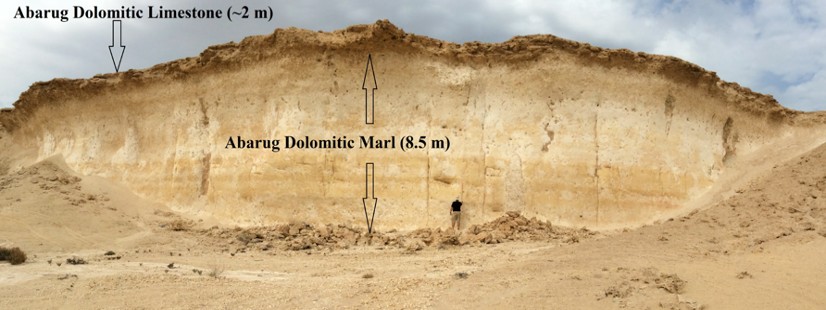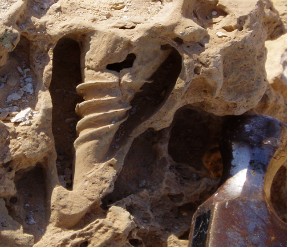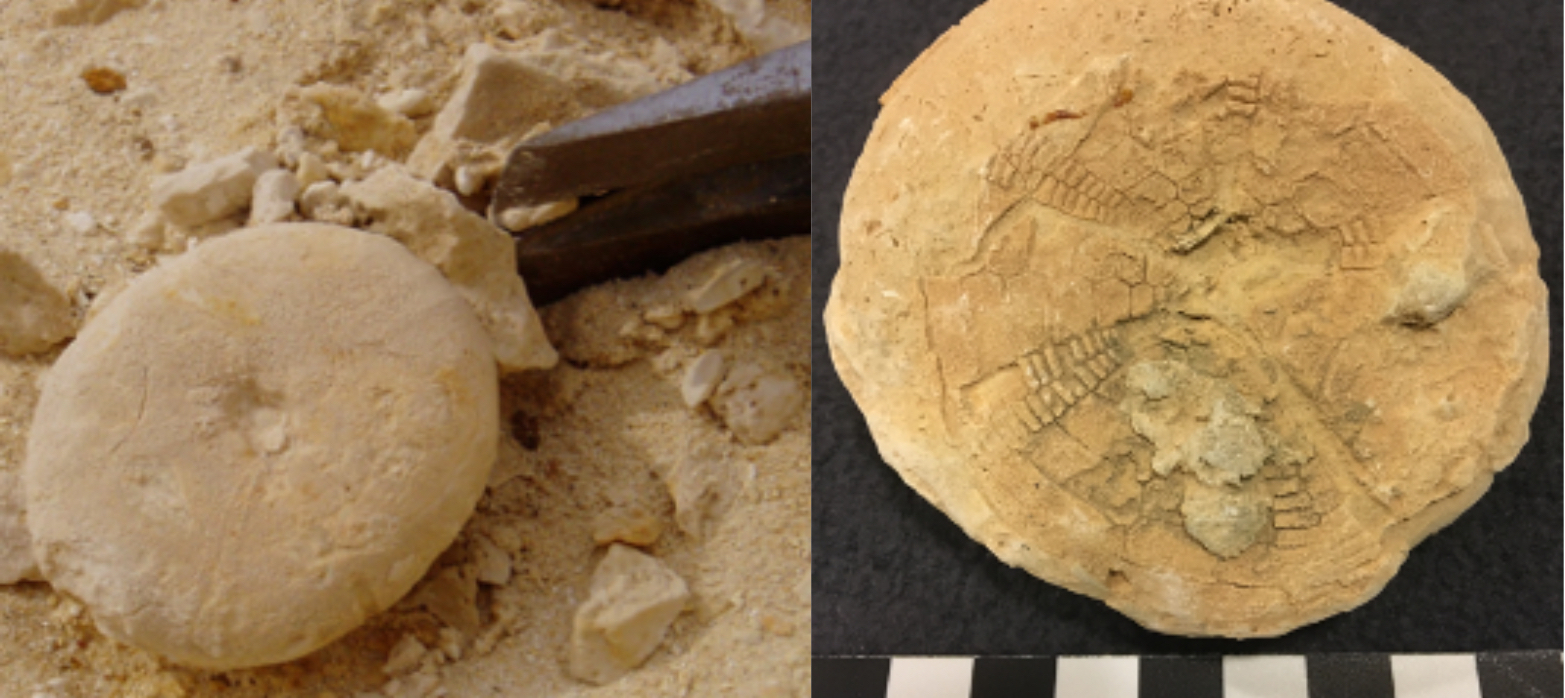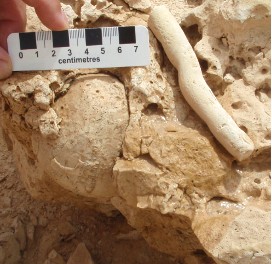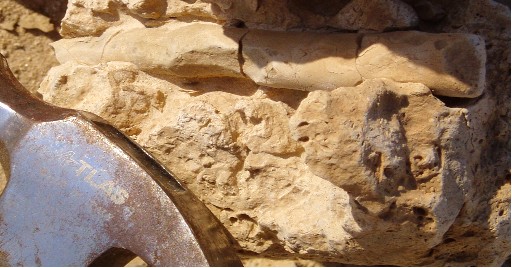Abaruk Bed Fm
Type Locality and Naming
See Dammam Fm
Synonym: Abarug Dolomitic Limestone and Marl Member; Abarug Beds Fm
Reference Section:
The reference section (Fig. 1) of this member was surveyed South of Zekreet, in the Ras Abarug Peninsula, just behind the Cuban Hospital.
[Figure 1: Abarug Dolomitic Marl (8.5 m) and Dolomitic Limestone (~2 m). See “A” in section shown in Fig. 1 in Dammam Fm]
Lithology and Thickness
In this locality, two units crop out that are found everywhere in Ras Abarug. A basal unit, resting on the crystalline limestones of the Umm Bab Member (or the Bir Zekreet Member when present), is comprised of dolomitic marls and soft, but compact, argillaceous dolomite, yellow-orange to green, nodular at the top, of a fairly constant thickness (27.9 ft (8.5 m)), called Abarug dolomitic Marl; an upper unit comprised of an irregularly dolomitized limestone that frequently changes to a calcareous dolomite (or not), grayish yellow to brown, hard, cavernous due to the dissolution of abundant Mollusc impressions and molds, generally not too thick (about 6.6 ft.(2 metres)) called Abarug dolomitic Limestone.
Relationships and Distribution
Lower contact
The chronological list of current rock units indicates the next older unit as Bir Zekreet Shale Member Fm
Upper contact
The chronological list of current rock units indicates the next younger unit as Dammam Fm
Regional extent
While the deposits of the Abarug Member are best known for their occurrence on the Ras Abarug Peninsula, they also occur close to the western coast, west-southwest of the town of Umm Bab. In this locality the Member is reduced in thickness with a very much reduced fossil content to not fossiliferous at all. Some isolated djebels composed of the Abarug Member south of the Doha-Dukhan highway are also not drawn on the geological map (Fig. 1); the latter would require to be updated.
GeoJSON
Fossils
The fauna of the Abarug dolomitic Marl is restricted to poorly defined Mollusc impressions observed in the nodular level at the top. The Abarug dolomitic Limestone is rather rich in Molluscs (Gastropods, bivalves) (Fig. 2) impressions and molds that are more or less determinable, Echinoderms (Figs. 3 & 4), Trace fossils (Figs. 4 & 5) and Large Foraminifera.
[Figure 2: Gastropod.]
[Figure 3: Echinoderms]
[Figure 4: Echinoderm with a trace fossil (burrow)]
[Figure 5: Trace fossil]
Age
Depositional setting
Additional Information
https://doi.org/10.37819/biosis.001.04.0134 (or via https://sites.google.com/site/leblancjacques)
